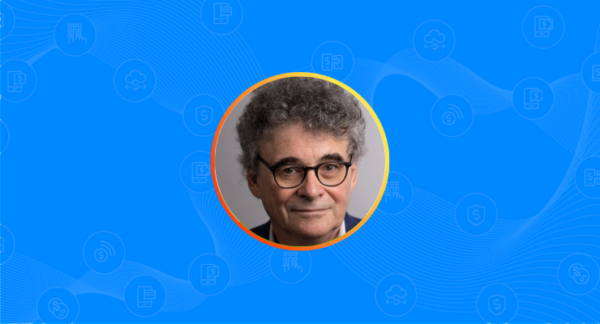
Michael was involved with Mojaloop in its earliest days and has been a highly active member of the Community ever since. His experience in the payments space began in 2000 with his work on M-PESA on behalf of IBM, which ultimately led to a role as chief architect for the project. He has also had several roles in payments technology for ModusBox and Infitx.
As he gets ready to dive into his new role, he kindly made time to answer some questions about his experience and aspirations for Mojaloop.
Connect with Michael on LinkedIn >
Tell us about yourself. What has your career path been and how did you become interested in the Mojaloop Foundation and its mission?
My career path has been decidedly picaresque. I started life in the academic world of English literature. I did a PhD at Cambridge and took on temporary lectureships. But eventually I needed to get a job. At the time I was a milkman, which made sense when I was completing my research because I worked for a few hours every morning and then could go and work on my thesis.
In the early 1980s, there weren’t many computer science graduates, and companies that wanted ordinary programming staff just had to advertise for people. I had worked on some computer projects, so I applied to various companies. An oil company in London, fascinated by the fact that a milkman had applied, offered me a job building large-scale financial models. Back then these models were built entirely by hand using very simple math, so I had no problem learning what I needed to know from the business analysts.
After doing well at that, I wandered through the world of systems development in various guises and eventually arrived at IBM right about the time that M-PESA, a mobile money system in Africa, was becoming an incredible success. Vodafone needed a larger company to run it, hired IBM, and I dove into M-PESA very quickly and wound up as chief architect. I became very interested in the payment side of things, which later led me to accept a position at ModusBox.
One of the first things I did at ModusBox was attend a Mojaloop workshop in London, where I met Miller Abel of the Bill and Melinda Gates Foundation. Because of Miller’s support, I ended up spending about half of my time working on the Mojaloop project. I’ve never looked back, nor indeed down.
So tell us about your new role and what your main responsibilities will be.
I’m going to be the “principal architect.” I’m already the rapporteur of the change control board which manages all of the APIs for Mojaloop and I’m also the Foundation’s representative to the ISO 20022 organization.
In addition, I work on a lot of functional extensions for Mojaloop. When people come up and say, “We want to do this” I will say, “You can already do this and here’s how” or “No, we don’t think it’s a good idea, and here’s why” or, “Mojaloop doesn’t do this, but we think it’s a great idea.” So, I then go away and think about how we could do that simply and most effectively, according to the principles of Mojaloop.
I’ll be working closely with James Bush, Sam Kummary, Paul Makin, and Julie Guetta, who really knows banking. I listen to Julie a lot.
What are you looking forward to most about your role and what do you hope to accomplish?
I’m looking forward to being able to concentrate on just Mojaloop.
I have two near-term priorities. The first is to finish upgrading the ISO 20022 standard so that it really supports inclusive instant payment systems in developing economies. Part of that is to get organizations across Africa to agree on a harmonious way to do ISO 20022 implementations.
The second thing is to get the COMESA project to be a real success. If we succeed in this, it’s going to be a new thing in the world. We’re talking about connecting 19 emerging economies of various degrees of sophistication — including currency conversion — seamlessly, efficiently and at low cost.
While there are lots of big payment systems, none of them are as difficult as what we’re doing. There are national systems, and some bilateral connections between systems. There’s also the Single Euro Payments Area (SEPA) that connects lots of different Euro jurisdictions. But there are no currency conversions to do, and all of the regulatory reconciliations are already taken care of.
In your opinion, what have been some of the Foundation’s most significant accomplishments to date?
Our work in Rwanda and with the COMESA Business Council (CBC) is setting a foundation for significant adoption of Mojaloop across Africa. It has been a heavy lift to get all the stakeholders engaged and collaborating with our community. The success of these projects will validate the open-source model as a flexible and innovative approach to delivering new technologies in digital public infrastructure projects around the world
I also want to give a shout out to Steve Haley. I think he has done an amazing job of getting regulators and governments to take Mojaloop seriously and making Mojaloop a serious contender for national payments systems in developing economies. I often think he doesn’t get the credit he deserves. It’s a real privilege to work with him.
What do you consider to be the biggest challenge in the digital payments landscape?
Trust. I think the fundamentally important thing that nobody wants to talk about is: in what sense can (or should) digital systems replace the trust between people? It’s just not very well theorized.
A digital currency like Bitcoin, for instance, aims to eliminate the need for trust between individuals, but in reality, it shifts trust to a consensus of verifiers. When a Bitcoin transaction is verified, the trust is not removed but displaced to a system of verification. And that’s true of all digital financial systems.
The difficult question is, what should those forms of verification be and do they make it easier or harder for people to transfer funds reliably and without getting cheated?
It’s also a moral and social question because, in emerging economies, digital trust hasn’t progressed as much as in advanced economies. A critical question is how quickly societal and individual behaviors can adapt to increasing digitization, and to what extent they should. This is a pressing concern for the finance industry because it must be answered for these systems to be successful in terms of their customers.
Historically, trust in cash as a reliable medium took centuries to establish. Similarly, trust in digital systems will require time and adaptation.
What keeps you excited and motivated to help further the Mojaloop Foundation’s mission? In other words, what gets you out of bed in the morning?
It’s interesting and it’s fun. I think it’s fascinating. I love it — it really is enjoyable.
I’m completely selfish about this, but I do these things because I think they’re interesting. I mean, I work because I think it’s important to work and it’s important to do useful work. But if I got out of bed in the morning and thought, “ho-hum, another day at Mojaloop,” I would pretty soon go somewhere else.
